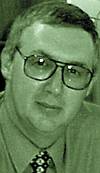
The South African National Accreditation System (SANAS) has become a signatory to the ILAC Arrangement. The purpose of the International Laboratory Accreditation Cooperation (ILAC) Arrangement is to develop a global network between laboratory accreditation bodies that have been successful in an independent assessment by ILAC experts. This in turn gives confidence in the results that originate from the testing and calibration laboratories accredited by these members. Laboratories accredited by ILAC Arrangement members can therefore be relied on to provide accurate results in terms of a published schedule of accreditation.

The ILAC Arrangement, which came into effect on 31 January 2001, provides technical support to international trade by promoting cross-border stakeholder confidence and acceptance of accredited laboratory data. Previously, there had been no international mutual recognition agreement in laboratory accreditation. This has been a hindrance for some types of international trade, particularly in those products that have had to undergo re-testing or re-calibration upon entry to importing countries. It is anticipated that the ILAC Arrangement will facilitate this trade.

The key to the ILAC Arrangement is a developing global network of accredited testing and calibration laboratories that are assessed and recognised as being competent by ILAC Arrangement signatory accreditation bodies. In turn, the signatories have been reviewed and shown to meet ILAC's criteria for competence. The ultimate aim is increased use and acceptance by industry as well as government of the results from accredited laboratories, including results from laboratories in other countries. In this way, the free-trade goal of 'a product tested once and accepted everywhere' can be realised.
The ILAC Arrangement builds upon existing or developing regional arrangements established around the world. The bodies participating in these regional arrangements are responsible for maintaining the necessary confidence in accreditation bodies from their region that are signatories to the new ILAC Arrangement.
The Arrangement will benefit both governments and industry. Governments can use it to further develop or enhance trade agreements, while industry users of test and calibration data will have greater confidence in the accuracy of the test or calibration report they are purchasing because it has been generated by an independently assessed facility that has a specific schedule of test and/or calibration activity for which it has been accredited.
The ILAC Arrangement builds confidence among accreditation bodies and their ability to determine a laboratory's competence to perform testing or calibrations. Confidence facilitates the acceptance of testing and calibration results between countries when the results can be demonstrated to come from accredited laboratories. This ultimately helps to reduce some technical barriers to trade.
As of September 2002, 42 laboratory accreditation body members of ILAC had signed the multilateral, mutual recognition arrangement.
For more information contact Spescom MeasureGraph, 011 266 1817 or SANAS, 012 349 1441.

© Technews Publishing (Pty) Ltd | All Rights Reserved